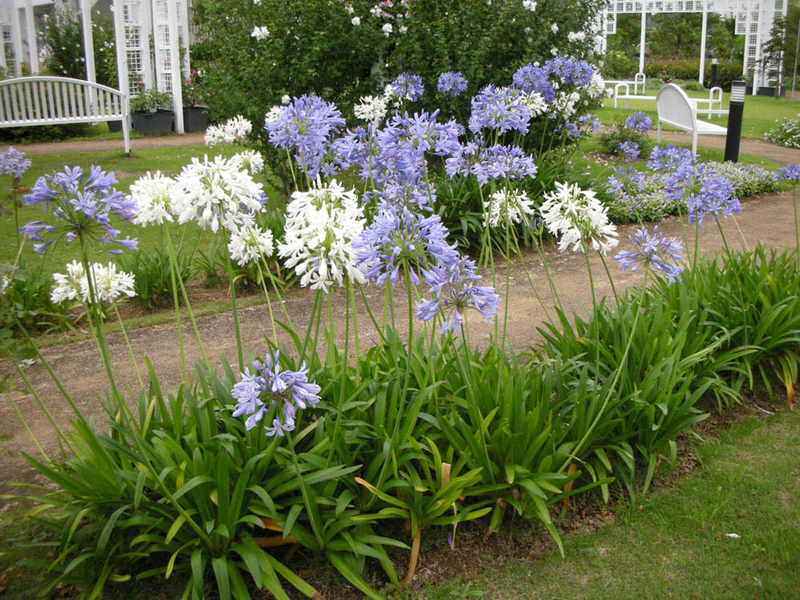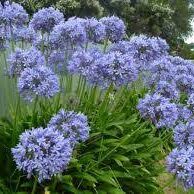Exactly how to Plant and Maintain Agapanthus in Your Yard
Wiki Article
Understanding the Art of Agapanthus Care: Essential Steps for Healthy Development and Vivid Blooms
In the realm of gardening, the growing of agapanthus stands as a rewarding venture for those who seek to support these classy blooming plants. With their striking blossoms and stylish foliage, agapanthus has actually recorded the focus of gardeners worldwide. However, achieving optimum development and vivid blossoms calls for a nuanced method that includes different necessary actions. From picking the ideal selection to understanding pruning methods, the journey in the direction of cultivating prospering agapanthus plants is multifaceted and holds the essential to opening the complete potential of these herb gems.
Picking the Right Agapanthus Variety

When selecting the appropriate Agapanthus variety for your yard, think about factors such as environment suitability, flower color, and growth routine. Furthermore, take into consideration the climate in your region to ensure the Agapanthus range you pick can thrive in your particular conditions. Understanding the development routine of different Agapanthus selections is essential for appropriate placement within your yard.
Suitable Growing Conditions
Considering the ideal ecological needs is necessary for successful Agapanthus farming. Agapanthus plants are delicate to cold temperature levels and should be secured from frost throughout wintertime months.To ensure healthy growth and vibrant blossoms, plant Agapanthus light bulbs at a depth of about 2-4 inches and room them 8-12 inches apart. Mulching around the base of the plants helps retain moisture and suppresses weed development.
Watering and Fertilizing Tips
Keeping correct dampness degrees and offering necessary nutrients are crucial elements in the care regimen for Agapanthus plants. It is vital to strike a balance when it comes to watering Agapanthus. If overwatered, these plants favor regularly wet dirt but are at risk to root rot. During the expanding period, water deeply as soon as a week, making certain the dirt is well-draining to stop waterlogging. In hotter climates or throughout durations of dry spell, more constant watering may be required to maintain the soil uniformly moist. Nonetheless, minimize watering in the winter to avoid water logged conditions.Feeding Agapanthus is important for promoting healthy development and respected flowers. Use a well balanced plant food, such as a 10-10-10 formula, in the early spring as new growth arises. By complying with these watering and fertilizing suggestions, you can ensure your Agapanthus plants flourish and create dynamic, resilient flowers.
Pruning Techniques for Agapanthus
Pruning Agapanthus plants at the proper times and with appropriate methods is important for preserving their health and wellness and promoting optimal development and blooming. The ideal time to prune Agapanthus remains in late winter season or very early spring before new growth emerges. Beginning by removing any dead or yellowing leaves near the base of the plant. Cut them as short as possible without damaging the arising shoots.Deadheading invested blossoms can also reroute the plant's power into creating more blossoms instead than establishing seeds. If you want to accumulate seeds for breeding, leave some blossoms to completely dry and fully grown on the plant.
Keep in mind to use clean, sharp devices to make accurate cuts and lower the risk of presenting conditions. Agapanthus. Regular pruning will aid keep your Agapanthus looking healthy and balanced and neat while guaranteeing a bountiful display screen of gorgeous blooms
Dealing With Typical Insects and Conditions
After guaranteeing appropriate trimming techniques for Agapanthus, it is important to resolve common bugs and conditions that can impact the health and wellness and vigor of these plants. Agapanthus plants are normally hardy but can still succumb specific issues. One usual insect that impacts Agapanthus is the Agapanthus gall midget. This small, orange fly lays its eggs in the vegetation, resulting in distorted development and flower buds that fall short to open up. To combat this pest, trim and ruin any type of affected plant parts and take into consideration making use of insecticidal soap.One more common issue look at here now is fungal fallen leave spot, which offers as dark lesions on the fallen leaves. To stop fungal diseases, ensure excellent air blood circulation around the plants, avoid overhead watering, and eliminate any kind of infected fallen leaves immediately. Furthermore, Agapanthus plants can deal with origin rot if they are planted in badly draining dirt. To avoid this, plant Agapanthus in well-draining soil and stay clear of overwatering. By being attentive and taking timely action against bugs and illness, you can aid your Agapanthus plants thrive and create vivid flowers.

Verdict
Finally, understanding the art of agapanthus care includes selecting the ideal selection, supplying excellent growing conditions, correct watering and fertilizing, appropriate trimming methods, and attending to Source typical insects and conditions. By following these important actions, you can make certain healthy growth and vibrant flowers for your agapanthus plants. Keep in mind to consistently check and maintain your plants to advertise their general wellness and long life.To guarantee healthy and balanced development and vibrant flowers, plant Agapanthus light bulbs at a deepness of about 2-4 inches and space them browse this site 8-12 inches apart. By complying with these watering and feeding tips, you can ensure your Agapanthus plants thrive and produce lively, long-lasting flowers.
One common pest that influences Agapanthus is the Agapanthus gall midge. In addition, Agapanthus plants can experience from origin rot if they are grown in inadequately draining pipes soil. By complying with these important actions, you can ensure healthy and balanced growth and dynamic flowers for your agapanthus plants.
Report this wiki page